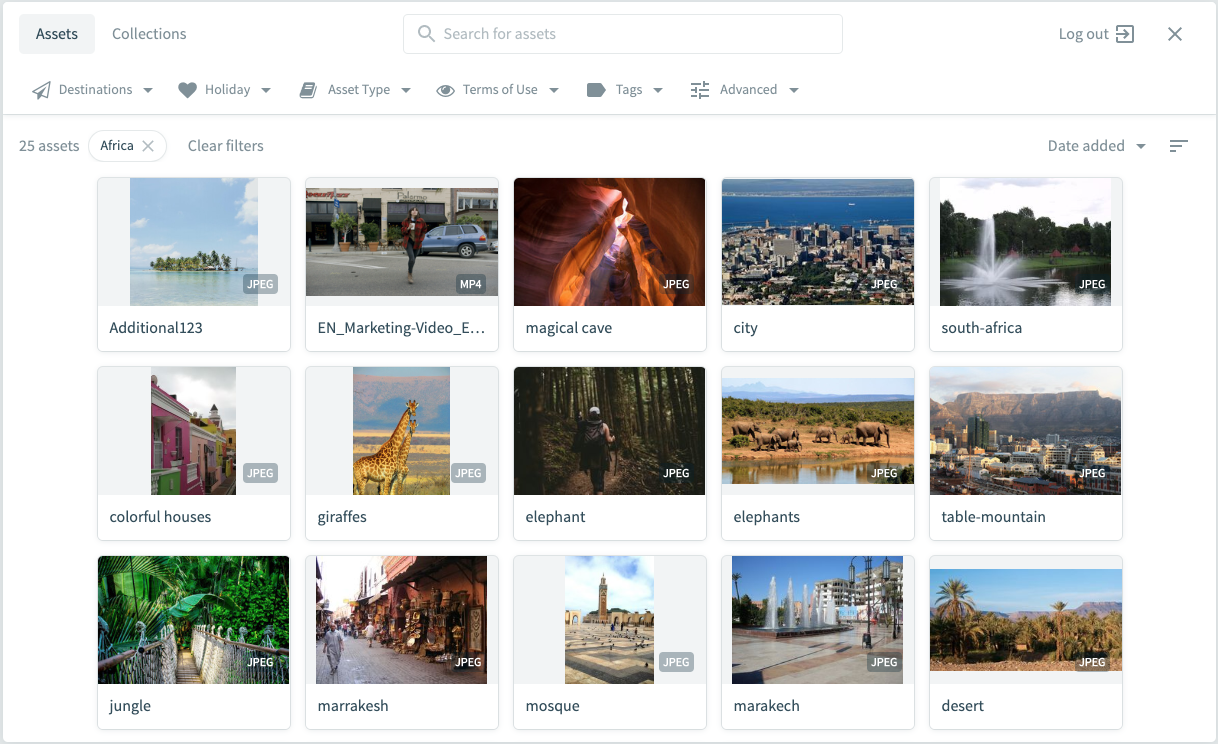Alternatives to Aprimo
1. Adobe Experience Manager Assets
+Pros
- Comprehensive AI automation through Adobe Sensei that delivers measurable efficiency gains.
- Enterprise scalability demonstrated through large-scale customer implementations.
- Adobe ecosystem integration that provides workflow advantages for Creative Cloud users.
-Cons
- Significant implementation complexity requiring dedicated technical resources.
- High total cost of ownership that may exceed mid-market budgets.
- Learning curve challenges associated with comprehensive feature sets.
One highlighted feature and why it's amazing
Smart Tags and AI-Powered Metadata represent AEM Assets' core differentiator, using Adobe Sensei computer vision to automatically analyze and tag visual content. The system identifies objects, scenes, colors, and concepts with claimed 90% accuracy, dramatically reducing the manual effort that typically consumes 20-30% of creative team time.
Another highlighted feature of why it’s amazing
Content Hub Integration embeds Adobe Express functionality directly within the DAM environment, enabling on-brand asset creation and variation through generative AI. This capability addresses content velocity demands where marketing teams need rapid asset adaptation across channels, while maintaining brand consistency through automated guideline enforcement.
2. Brandfolder Brand Intelligence
+Pros
- Multi-Vendor AI Integration provides technical flexibility unavailable in single-vendor approaches.
- Proven Enterprise Performance demonstrates measurable outcomes through Fortune 500 implementations.
- Trainable AI Customization enables 85% accuracy in optimal conditions.
- Comprehensive Video AI Capabilities address multimedia governance needs.
-Cons
- Enterprise-Only Pricing Model creates significant barriers for smaller organizations.
- Complex Implementation Requirements demand 6-12 weeks deployment timeline plus 3-6 months AI training period.
- Mobile Accessibility Limitations through browser-only access restrict field designer usability.
- Limited Generative AI Capabilities for style guide creation lag behind specialized tools.
One highlighted feature and why it's amazing
Enables custom metadata generation that adapts to brand-specific taxonomies and visual recognition needs.
Another highlighted feature of why it’s amazing
Combines Google Vision and Amazon Rekognition with proprietary natural language processing for intent-based search capabilities.
3. Bynder DAM with AI Metadata
+Pros
- Proven face recognition accuracy with 96% time reduction for 22,000-photo processing.
- Visual-first AI capabilities through Search by Image, Text-in-Image, and Similarity Search.
- Enterprise governance excellence with conditional metadata workflows.
-Cons
- Creative Cloud integration depth trails Adobe's native ecosystem approach.
- AI accuracy constraints produce 15-20% error rates in complex scenarios.
One highlighted feature and why it's amazing
Powers three primary discovery modes: Search by Image, Text-in-Image, and Similarity Search, enabling content discovery through visual analysis rather than traditional metadata dependency.

Another highlighted feature of why it’s amazing
Automatically identifies and tags individuals across asset libraries, demonstrated 96% time reduction in BDA Inc.'s 22,000-photo processing project.
Other Alternatives
Canto AI Visual Search
Cloudinary AI Media Platform
Picturepark
How We Researched This Guide
About This Guide: This comprehensive analysis is based on extensive competitive intelligence and real-world implementation data from leading AI vendors. StayModern updates this guide quarterly to reflect market developments and vendor performance changes.
236+ verified sources per analysis including official documentation, customer reviews, analyst reports, and industry publications.
- • Vendor documentation & whitepapers
- • Customer testimonials & case studies
- • Third-party analyst assessments
- • Industry benchmarking reports
Standardized assessment framework across 8 key dimensions for objective comparison.
- • Technology capabilities & architecture
- • Market position & customer evidence
- • Implementation experience & support
- • Pricing value & competitive position
Research is refreshed every 90 days to capture market changes and new vendor capabilities.
- • New product releases & features
- • Market positioning changes
- • Customer feedback integration
- • Competitive landscape shifts
Every claim is source-linked with direct citations to original materials for verification.
- • Clickable citation links
- • Original source attribution
- • Date stamps for currency
- • Quality score validation
Analysis follows systematic research protocols with consistent evaluation frameworks.
- • Standardized assessment criteria
- • Multi-source verification process
- • Consistent evaluation methodology
- • Quality assurance protocols
Buyer-focused analysis with transparent methodology and factual accuracy commitment.
- • Objective comparative analysis
- • Transparent research methodology
- • Factual accuracy commitment
- • Continuous quality improvement
Quality Commitment: If you find any inaccuracies in our analysis on this page, please contact us at research@staymodern.ai. We're committed to maintaining the highest standards of research integrity and will investigate and correct any issues promptly.